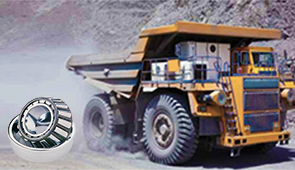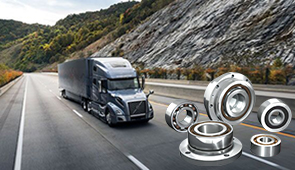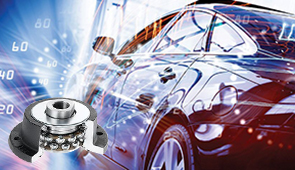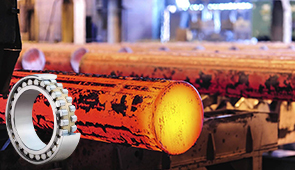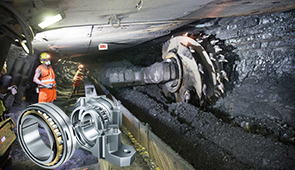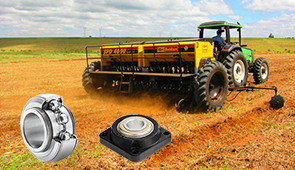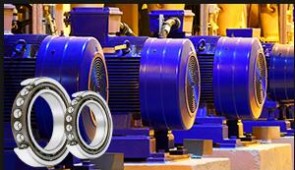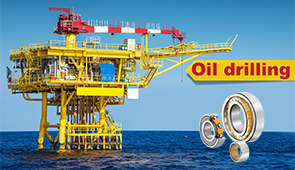Are ABEC 7 Bearings Good for Skateboards? An In-Depth Look at ABEC Ratings and Performance
The quality of bearings is something that controls many factors of the performance of your skateboard. Among the bearings, ABEC 7 bearings are often talked about, posing nearly the same question in every skater’s and enthusiast’s mind-would these bearings really work well for skateboards? This article will take a deeper insight into the ABEC rating system, what it measures, and whether ABEC 7 bearings really do deserve their reputation for speed and precision. For any skater, be it seasoned or just starting, a bearing-grade understanding will help make the right decisions for a smooth, fast ride.
Understanding ABEC Ratings
What is the ABEC Scale?
ABEC stands for Annular Bearing Engineers’ Committee. It is a standardized scale used to rate the precision and efficiency of ball bearings. Ratings are indicated by odd numbers—1, 3, 5, 7, and 9—that dictate the tolerance of the bearing. The greater the ABEC rating, the tighter the tolerances are on the bearing in fabrication, which supposedly accounts for heightening efficiency and precision in operation.
The ABEC scale only measures certain tolerances, such as dimensional tolerances and rotational accuracy at very low internal load. ABEC does not consider things like the material quality, lubrication, or how it takes side loads, which are all fundamental to skateboarding performance. Therefore, an ABEC 7 or 9 bearing is not necessarily a “better” bearing for skateboards at all times if there are other performance characteristics not met.
For skateboarding, real-life performance ordinarily depends on other characteristics such as durability, resistance to contaminants, and the capacity to take high-impact forces. Though the ABEC scale gives great leverage in determining precision, however, skaters have to test bearings based on the particular application, the surfaces they’ll ride on, and their upkeep to find precise outcomes for their kind of skating.
Purpose of ABEC Ratings
ABEC ratings were established to classify and standardize the manufacturing tolerances of ball bearings. The Annular Bearing Engineers’ Committee created the ABEC scale to ensure bearings met specified precision requirements for industrial machinery and applications. ABEC ratings go from 1 to 9, in odd increments. A bigger number translates to tighter tolerances and greater precision in the design and construction of the bearing.
ABEC rating defines how precisely the bearing parts are manufactured and assembled-that is to say, the better the rating, the more gentle and efficient its rotation. For industrial applications, say for high-speed spindle equipment, the tolerances must be tight enough to reduce friction, ensure stability, and guarantee consistent performance in time. However, how much the ABEC rating could mean a functional worth depends on what the bearings are used for in context.
Rather more limited is the field of application for ABEC ratings in skateboarding. While it implies some basic standards for bearing quality, aspects such as material longevity, type of lubrication, or ability to withstand external forces may equally or even more impact actual performance. Therefore, for skaters, it is good to recognize cases in which a higher ABEC rating does not mean better performance under real-life conditions. Selecting bearings should be based on the specifics of requirements and conditions of use rather than solely on ABEC ratings as an indicator of quality.
How ABEC Ratings Measure Precision and Performance
ABEC is a way to rate ball bearing precision and tolerance. Specifically, ABEC ratings, developed by the Annular Bearing Engineers’ Committee, express the degree to which the bearing components conform to a given specification of dimensional tolerances. The scale ranges from ABEC 1 to 9, with a higher number implying less tolerance and higher precision. This precision translates to the smoothness of axial rotation and efficiency in high-speed rotation.
However, although able to measure dimensional tolerances well, the ABEC rating will not serve as a gauge of real-life performance in practical applications. Some other essentials that come into play include materials used, load-handling ability, types of lubrication, and resistance characteristics against environmental contaminants like dust or moisture. For example, a bearing with a lower ABEC rating but of superior make material will certainly outperform a fancy rating-bearing where speed could be an issue. There are even conditions in the real world, like impacts on uneven pavements and flying debris, outside the parameters considered by the ratings.
Hence, ABEC ratings should be treated as one among a handful of considerations to single out a bearing. ABEC ratings may indicate greater promise for precision under ideal working conditions, but then users must select bearings best suited to the actual needs of their application. Knowing the fine print on materials used and their performance in the field may just be as important as knowing the rating system. In actual usage, even choosing between two products is sometimes an exercise in compromise between theoretical precision and real-life performance.
Exploring ABEC 7 Bearings
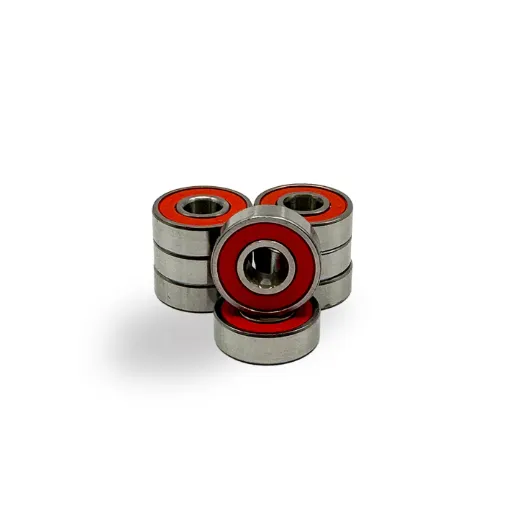
Performance Characteristics of ABEC 7 Bearings
In much the same way as high performers are demanding the most out of them, ABEC 7 bearings have to be made to the highest levels of exactitude with utmost production and accuracy standards. The high-level tolerance restricts dimensional variation for little friction and smooth rotation; the ABEC 7 bearing has such increased accuracy that vibration and sound therein are so low that they may be employed in instruments where operational stability is paramount, aerospace and other high industrial equipment.
Furthermore, the bearings would be manufactured from high-quality materials such as Chrome Steel (AISI 52100) or stainless steel, offering wear resistance, corrosion resistance, and extended lifespan. When used with proper lubrication, these materials bear huge loads and high rotational speeds while maintaining consistent performance. ABEC 7 bearings are mainly situated where minimum downtime and maximum accuracy are required, showing huge capabilities for maintaining concentricity and structural integrity against stress.
In fact, it must be mentioned how the ABEC rating mainly considers geometric tolerance, while other factors, including load distribution, temperature resistance, and material stability, considerably influence the bearing’s actual performance. For instance, supplementary upgrades in the form of ceramic hybrid ball construction or an improved sealing system shall further optimize the results when oriented under alternate thermal conditions or high axial load. The technical properties of ABEC 7 bearings place them as candidate bearings whenever unparalleled precision and reliability are needed.
Durability and Efficiency in Different Scenarios
The durability and performance of precision-type bearings such as ABEC 7 are highly dependent upon usage conditions. Type of load, speed of operation, lubrication, and contaminants in the environment are a few factors that affect bearing life. Under laboratory-controlled conditions, these bearings come within highly low friction levels and tend to attain maximum service life with minimum wear of contacting surfaces. This phenomenon is brought about by the fact that the raceways and balls are manufactured to extreme tolerances in these kinds of bearings; that is, the heat produced and energy dissipated during the bearing operation are minimized. Some variable stresses may, however, violently alter the bearing’s performance in real-life applications. An example could be the causing of thermal expansion and fatigue of the materials by dynamic axial loads or high speeds, meaning certain robust design features are required, such as high-grade seals or materials with a very low coefficient of thermal expansion.
Corrosion-resistant coatings (ceramic or stainless steel) become mandatory to apply when one has to ensure bearing integrity against such harsh environmental conditions, which may involve extremely high particulate contamination or corrosive substances. Specialized lubricants are usually synthetic or solid lubricants like molybdenum disulfide; such lubricants provide increased thermal stability and enhanced wear resistance to keep it running smoothly under extreme temperatures or in vacuum states. The right lubrication also discourages any metal-to-metal contact, which is vital to boosting bearing life when confronted with abrasive debris or moisture ingress.
From an efficiency perspective, for these bearings, recent developments in material science and engineering have enlarged their energy-saving properties. Hybrid ball technology, the technology with ceramic balls and steel raceways, has drastically cut down rotational inertia, and this has a direct impact on applications ranging from high-speed spindles in manufacturing machines to robotics and aerospace subsystems. High-precision bearing systems guarantee better energy efficiency under different loading profiles, but given their capacity for reduced maintenance intervals, decreased down times, and operating costs without discrimination, explains how they have been put to use by a variety of industries.
Comparison with Other ABEC Ratings
The ABEC scale runs from 1 to 9, where the highest rating numbers exhibit the highest tolerance and precision.
|
Key Point |
ABEC 1 |
ABEC 3 |
ABEC 5 |
ABEC 7 |
ABEC 9 |
|---|---|---|---|---|---|
|
Precision |
Low |
Moderate |
High |
Very High |
Extreme |
|
Speed |
Low |
Moderate |
High |
Very High |
Extreme |
|
Durability |
Basic |
Moderate |
Good |
Excellent |
Superior |
|
Cost |
Low |
Affordable |
Moderate |
High |
Very High |
|
Use Case |
Basic |
General |
Advanced |
Precision |
Specialized |
ABEC 5 vs ABEC 7 Bearings
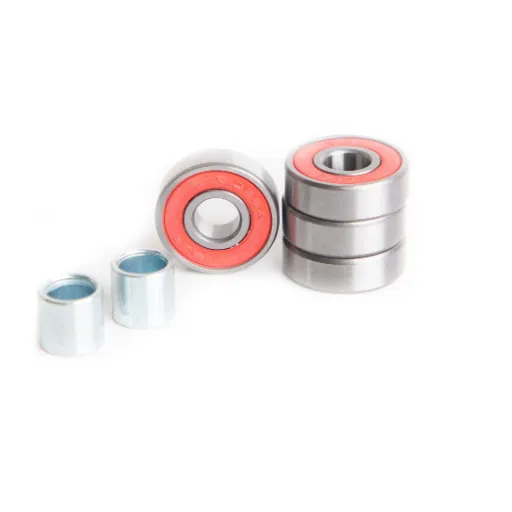
Key Differences Between ABEC 5 and ABEC 7
Depending upon speed, ABEC 7 bearings have tighter tolerances and perfection than the ABEC 5 ones, making them highly desired, although ABEC 7 bearings are quite expensive and not enduring under tough conditions.
|
Key Point |
ABEC 5 |
ABEC 7 |
|---|---|---|
|
Precision |
High |
Very High |
|
Speed |
High |
Very High |
|
Durability |
Good |
Moderate |
|
Cost |
Moderate |
High |
|
Use Case |
General |
Precision |
|
Noise |
Moderate |
Low |
|
Friction |
Moderate |
Low |
|
Maintenance |
Moderate |
High |
Advantages of Choosing ABEC 7 Bearings
- Superior Accuracy: Harsh tolerances are abided by ABEC 7 bearings, granting them the qualities needed where high accuracy is sought. Their precision ensures as perfect an alignment as possible, with minimum deviation, making it imperative in machinery or high-performance apparatus.
- Higher Speed Capability: Due to frictional reduction and the superior quality of manufacture, the ABEC 7 bearings stand to uphold extremely high rotational speeds. Hence are made fit for high-speed applications like skating performance or precision tools.
- Low Friction and Noise Reduction: By virtue of their design refinement and surface finish, ABEC 7 bearings experience very low friction and hence operate quietly. This property becomes a necessity in any environment where the main concern is noise abatement.
- Performance Objective in Precision Application: In a relatively hostile environment where precision is demanded by such trades as medical devices, precision instruments, or advanced robotics, these bearings perform that extra bit better.
- Enhanced Efficiency: ABEC 7 bearings result from the best materials and excellence; they, therefore, improve the efficiency of the application. With the suppression of energy losses through friction, they further enhance system performance, something critical in a setting of competitiveness and industriality.
Limitations of ABEC 7 Bearings
While offering utmost precision and performance, there are several limitations of ABEC 7 bearings that one must consider in some applications. One key limitation would be cost. Due to the superior quality of materials and tight manufacturing tolerances required, ABEC 7 bearings are priced much higher than their lower-grade counterparts. This would, of course, be a disadvantage when we are talking about cost-effective projects where such extreme precision would not be called for.
Depending on which application you need, these bearings might also prove to be sensitive to contamination and the quality of lubrication. These bearings of extremely tight tolerances are afflicted by even the smallest debris present in the environment or a lack of proper lubrication, which either degrades their performance or causes them to wear prematurely. Hence, maintaining the bearings gets more meticulous, and strict environmental control must be placed to derive the best performance from these bearings, especially in industries where exposure to dirt, dust, or moisture is inevitable.
Finally, they may also not be the right choice for all engineering applications. For example, in very high-load or impact-driven environments, the extra precision might not offset its lack of durability compared to bearings designed to be tough. Heavy-duty-oriented industries might find less precise but tougher alternatives to be adequate.
Lastly, it is important to note: the ABEC rating only refers to rotational tolerance and does not consider angular contact tolerances, axial loads, or material durability in harsh operating environments. This eliminates ABEC 7 ratings from being useful for applications that need further bearing characteristics besides precision, like high-speed turbines, aerospace systems, or extreme-temperature environments.
Performance in Various Applications
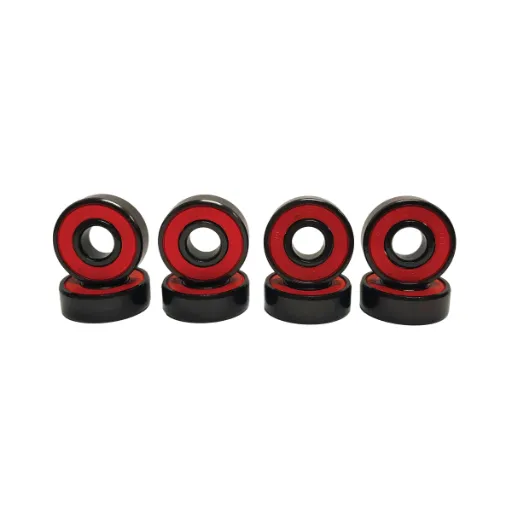
Rollerblading and Other Uses
Rollerblading is smooth and efficient when bearings are properly lubricated, allowing it to perform at its best. Bearings having low ABEC ratings, like ABEC 3 or ABEC 5, are generally suitable for a casual skater as they offer acceptable rotational precision without giving up on durability, subjected to variable conditions. For the advanced rollers or those involved in high-speed rollerblading and competitive rollerblading, rather, bearings with tighter tolerances will always perform better since friction is reduced and the speed is enhanced. Such bearings form an example of the custom hybrid ceramic variety.
Bearings, for their part, have many other critical uses wherever efficiency and durability for rotation come into play. Skateboarding, for example, needs bearing designs that cater not only to rotational speed but also to impact resistance due to tricks and jumps. Industrial machines, on the other hand, require bearings that can endure high-speed operations continuously under extreme temperature conditions while keeping their structural integrity intact. The specifications are accordingly worked out for the anticipated performance,” with a strong presence of material sciences features, sometimes, stainless steel or ceramic composites to achieve longevity and reliability.
The applications showcase that while the ABEC rating is useful as a guide for the initial selection, factors such as load capacity, lubrication, and environment should be given equal consideration for bearing suitability. Knowledge of these factors assures better performance and safety in diverse applications, plus recreational activities.
ABEC 7 Bearings in Machinery
When precision and efficiency play the role of prime consideration, it is an ABEC 7 bearing that has to be installed in the mechanism. These bearings receive very careful construction and provisions so that they may offer maximum resistance to rotational variation and minimal tolerance deviations, thus becoming the ideal choice for use in special machinery such as CNC machinery, robotics, and high-speed turbines. These bearings can endure conditions involving extremely high load cycles, high rotational speeds, and essentially no frictional losses.
With the ever-increasing evolution of manufacturing techniques, undertakings have also been put forth for improved ABEC 7 bearing performance. With the recent advances in materials science, hybrid designs can now be incorporated in these bearings-they utilize ceramic balls in places where weight and thermal expansion need to be reduced while still aiming at operational stability. In lubrication systems, advances are also realized: nano-lubricants and self-healing greases have recently come into use to massively reduce wear rates and, hence, increase the service life of these bearings even in extreme operating conditions.
ABEC 7 bearings can achieve running speeds beyond 20,000 RPM and maintain grades under micrometer-range deviations all the time. It also implies that these bearings are basically needed in an environment where precision is key. When installed in machines, they also reduce downtime and help reduce maintenance, thereby saving costs in industrial workflows.
By equipping ABEC 7 bearings with state-of-the-art monitoring technologies such as IoT-enabled sensors, performance can be tracked in real time. This opens avenues for predictive maintenance and ensures guaranteed performance even under dynamic operational conditions. While developments such as these, driving efficiency and accuracy, prove the transition of ABEC 7 bearings into a key component of present-day machinery.
Factors to Consider When Choosing Bearings
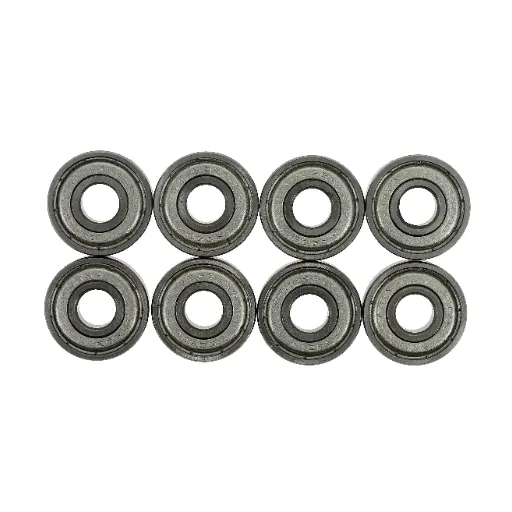
Cost vs Performance: Making the Right Choice
Ratings 7 and 9, higher in ABEC, represent better precision and speed but also demand a higher expense; conversely, a rating of 1 or 3 would be much more affordable but less efficient.
|
Key Point |
ABEC 1 |
ABEC 3 |
ABEC 5 |
ABEC 7 |
ABEC 9 |
|---|---|---|---|---|---|
|
Cost |
Low |
Affordable |
Moderate |
High |
Very High |
|
Precision |
Low |
Moderate |
High |
Very High |
Extreme |
|
Speed |
Low |
Moderate |
High |
Very High |
Extreme |
|
Durability |
Basic |
Moderate |
Good |
Moderate |
Low |
|
Use Case |
Basic |
General |
Advanced |
Precision |
Specialized |
Maintenance Tips for Long-lasting Bearings
Proper bearing maintenance will ensure that their practical service lives are extended, which allows for consistent performance. The following recommendations describe technical bearing maintenance techniques in some detail:
- Regular Cleaning: Bearings should be cleaned at regular intervals to remove debris, grease buildup, or contaminants that can create hindrances to performance. Employ high-grade solvents or specialized bearing cleaning solutions to clear all particles from the system.
- Proper Lubrication: Lubrication helps lower friction and prevents wear. Select a lubricant pertinent to the type of bearing and its working surroundings. Re-lubricate as per the stipulated schedule laid down by the manufacturer for both duration and amount.
- Monitor Operating Conditions: Constantly keep an eye on the bearing operating parameters like temperature, vibration, and noise. Any variation from preestablished values might indicate impending wear or damage. Employ infrared thermometers and vibration analyzers for the acquisition of pertinent data.
- Prevent Overloading: Bearings are rated for certain load capacities. Beyond these limits, premature failures will occur. Ensure that actual loads are within allowed tolerances, or else redesign the loads to spread forces evenly.
- Avoid Contamination: Ensure that the bearings are sealed or stowed from ingress of dust, moisture, or chemical contaminants. Use sealing devices like gaskets, shields, or special housing to negate harsh outside conditions.
- Inspect for Wearing: Scheduled inspections have been performed for bearing conditions, such as physical damage, pitting, and scoring or discoloration. Immediate replacement in the event of damage containment will avoid costly downtime.
- Check Installation: Improper installation can create misalignment, which affects bearing performance. Use precision tools during installation, and follow manufacturers’ guidelines correctly, so as not to stress the bearing unduly.
If these maintenance practices are followed, bearings will carry their performance on for longer while lessening failure rates and interruptions to operations. On top of that, accelerated in real time by advanced technologies like condition monitoring systems and predictive maintenance software.
Application-Specific Requirements
Selection and maintenance of bearings need to be application-driven to operate better. Paramount forces such as load capacity, operating speed, temperature ranges, and environmental conditions must be considered intensely before deciding on a bearing type. For instance, high-speed machinery may require precision bearings with specialized lubrication systems, cast in contrast with those expected to suffer from any environmental shocks and are offered in corrosion-resistant materials. Ensuring minimum wear and chances of failure against bearing specifications would, therefore, enhance the service life depending on the operating parameters.
In my understanding, the study of the operating environment and anticipated loads should be the first step in meeting the requirements. This means that the bearings chosen must be suitable for the mechanical and environmental demands of the application. Then, the proper lubrication, which is based on the bearings’ operating conditions, is to be maintained. This reduces friction with heat, another major factor in premature wear of bearings. Monitoring, inspection, and cleaning form part of the maintenance regime, and this way, any symptoms of a potential problem could appear in time to guarantee system reliability.
I believe that the technological edge of predictive maintenance systems could add great value to maintenance strategies. These monitoring systems provide instant data sets on bearing performance to enable precise diagnosis, therefore cutting down on inadvertent time losses. This not only goes a long way toward optimizing the bearing life but also helps gigantic machinery operate consistently while keeping its operations cost-effective. Addressing those needs that are application-oriented leverages the sustainability and reliability of bearings within complex systems.
Frequently Asked Questions (FAQ)
Q: What are ABEC 7 bearings?
A: ABEC 7 bearings are a type of precision bearing designed for running at high speeds. They are made to very definite tolerances by the Annular Bearing Engineering Committee, offering a better level of performance than the lower ABEC ratings.
Q: Are ABEC 7 bearings okay for skateboarding?
A: Yes, ABEC 7 bearings are used in skateboarding because they maintain a good balance between speed and durability. They enable the skater to enjoy a smooth ride with lots of control, thus making it very common amongst skateboarders.
Q: What is the comparison between ABEC 7 and ABEC 9?
A: ABEC 7 offers good bearing performance; ABEC 9 and higher are rated for greater performance and actually offer more precision. The greater the ABEC rating, the finer the manufacturing tolerances and hence the better the bearing can offer in terms of speed and performance.
Q: What differentiates the ABEC 5 from the ABEC 7 bearings?
A: It lies mainly in precision and performance. ABEC 5 bearings are used generally, while ABEC 7 bearings have tighter tolerances and hence can offer higher speed and smoother operation, mainly useful to more advanced skating.
Q: Are ceramic bearings better than steel bearings?
A: The ceramic bearings are usually considered better for their low friction, high wear resistance, and corrosion resistance. Depending on use and service, steel bearings, even ABEC-rated ones, can also perform competently.
Q: How do I clean my ABEC 7 bearings?
A: Cleaning of ABEC 7 bearings generally consists of taking them off the skateboard, cleaning them in some form of degreaser, drying them thoroughly, and finally applying very light lubrication to maintain their performance and life.
Q: What are some advantages of having higher ABEC rating bearings?
A: Bearing holders with increased rating, such as ABEC 7 and ABEC 9, offer better speed, smooth rotation, and long life. Being manufactured to a very precise specification ensures the bearing holder will always give the best performance in any high-speed application.
Q: What should I look for when shopping for bearings for my skateboard?
A: In choosing the bearings for your skateboard, you should find an ABEC rating, material (steel or ceramic), and a maintenance schedule. Higher-rated bearings, such as ABEC 7 or ABEC 9, would offer great performance under intensive skating, and the lower ratings might be good enough for recreational use.
Q: How do I know if my ABEC bearings fit my needs?
A: To find out if your ABEC bearings fit your needs, you should consider the type of skating you do, your skill level, and the conditions you ride in. Bearings rated ABEC 7 or higher are recommended for the more demanding applications, with those rated sufficient for beginners.
UCTH213-40J-300 with Setscrew(inch)
CNSORDERNO: Normal-duty(2)
TOGN: UCTH213-40J-300
SDI: B-R1/8
SD: 2 1/2
UCTH212-39J-300 with Setscrew(inch)
CNSORDERNO: Normal-duty(2)
TOGN: UCTH212-39J-300
SDI: B-R1/8
SD: 2 7/16
UCTH212-38J-300 with Setscrew(inch)
CNSORDERNO: Normal-duty(2)
TOGN: UCTH212-38J-300
SDI: B-R1/8
SD: 2 3/8
UCTH212-36J-300 with Setscrew(inch)
CNSORDERNO: Normal-duty(2)
TOGN: UCTH212-36J-300
SDI: B-R1/8
SD: 2 1/4
UCTH211-35J-300 with Setscrew(inch)
CNSORDERNO: Normal-duty(2)
TOGN: UCTH211-35J-300
SDI: B-R1/8
SD: 2 3/16
UCTH211-34J-300 with Setscrew(inch)
CNSORDERNO: Normal-duty(2)
TOGN: UCTH211-34J-300
SDI: B-R1/8
SD: 2 1/8









